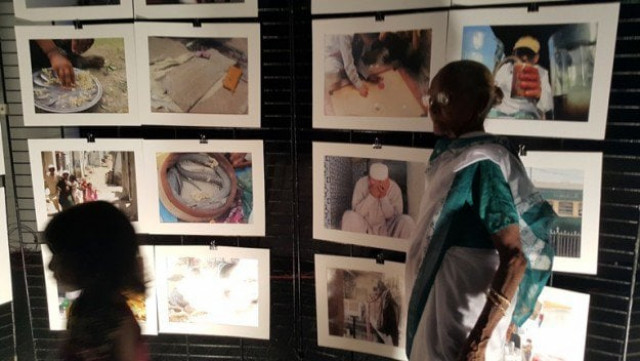
Some 320 students, however, aim to change that perception by capturing 70,000 photographs from around the city, which were later shortlisted, to document the incredible diversity of Karachi.
A two-day photography and travelogues event titled ‘I Am Karachi Museum’ was organised on June 12 and June 13 June at Alliance Francaise de Karachi in collaboration with I Am Karachi and The school of Writing, featuring photos and travelogues of students belonging to different districts of the city Karachi.
A brainchild of the I Am Karachi team, the event, which featured the four-weekend activities participated by students who photographed the city’s districts, was organised to “give the youth of the city an opportunity to explore their city as many youngsters have apparently been going astray when they get used by criminals, drug-dealers and gangsters,” said one of the facilitators of the 4-weekend project.
“The extraordinary thing about this project was that it did away with class differences by inviting students from all backgrounds, irrespective of their social status. The requirements to get enrolled in the project were that, first, you have to be a student; second, you have to have an interest in photography and writings,” says Danial Shah, a professional photographer and mentor to some 50 students hailing from Malir and District West of the city. "Even if they did not own a camera, we gave them one to take photos with."

PHOTO: FAWAD HASAN/EXPRESS
The project tried to imbue in youth a sense of ownership of the city. “We purposely asked students to first keep exploring their districts for three weeks, during the weekends. Afterwards, we made them explore the entire city,” says Danial. “This made them realise how many parts of their own areas and districts had never caught their attention. These trips for photography have given them a sense of ownership of their districts and the city.”
To give the event an authentic feel, organisers created a ‘Dhaba’ style tea-shack at the venue.

PHOTO: FAWAD HASAN/EXPRESS
Afreen Hussain, a participant from Malir, said she was not aware of how much importance perspective had in photography before. “I have learnt a lot from this four-week project. I had never written a poem before, nor did I know how to write one. Thanks to this project, I was also taught writing,” she said.
Another student and participant, Umaima Qurban, also from Malir, says, “We are always shown photos of bloodshed and negativity in Karachi; whereas this project succeeded in bringing out the brighter side of the city, which has always been there but often goes unnoticed.”

PHOTO: FAWAD HASAN/EXPRESS
Among the exhibited photos were shots of fortune-tellers who make their pet parrots pull out the envelope, found mostly in the old-city area; a female vendor selling dry fruits outside Empress Market; an ageing loader at the Railway Station; a fisherman mending his fishing net; a tired cobbler; a smiling ‘gola-ganda’ vendor with his pushcart, among many other sights.
Some of the students creatively documented the Super Café Pyala of the Shah Faisal Town. “Yahan jo ata hay, wapis zarur ata hay (Whoever comes here, surely returns),” plays a recording of the writing on the famous café. “Scores of people come here for our Doodh-Patti and they just throng the place,” says a hotel worker in the recording. On what makes the café a popular hang-out, he says, “Sometimes, the best things in life are not found in expansive places but in a corner of your own city.”

PHOTO: DANIAL SHAH
Asked if the four-week project was organised to give the younger generation a sense of ownership of their city, Mohsin Tejani, the founder of The School of Writings and member of the I AM Karachi team, answered in the affirmative and said, “I think there are three steps of this process: awareness, interaction and ownership. People from different areas, religions and cultures within the city do not know each other. They do not know what temples, churches, Imam Baras are located in the city and where. This breeds intolerance. How can they own the city in this situation?” asks Tejani.
“If we do not interact, we won’t be able accept and understand others. And this project has tried and managed to do that,” he adds.
Tejani told The Express tribune that the students were surprised to discover many captivating places in their own districts. Visiting places like Hanuman Mandar, Essa Nagri, churches, Gurdwaras proved to be an inspiration.
“I remember the time when I was a kid and would go to the yearly organised ‘mela’ at St Lawrence’s church in the Garden East. No one asked me what sect or religion I belonged to. Those were the old times. This project has tried to bring those days of ownership, acceptance and tolerance back,” he says.
The event also featured authors Asif Farrukhi, Haseena Moin, and Shandana Minhas, who recited their work.


















COMMENTS
Comments are moderated and generally will be posted if they are on-topic and not abusive.
For more information, please see our Comments FAQ